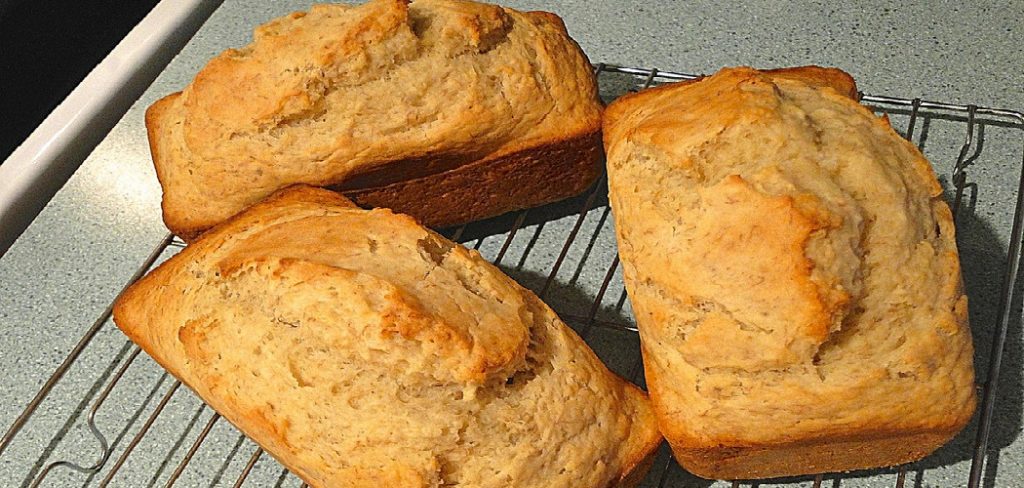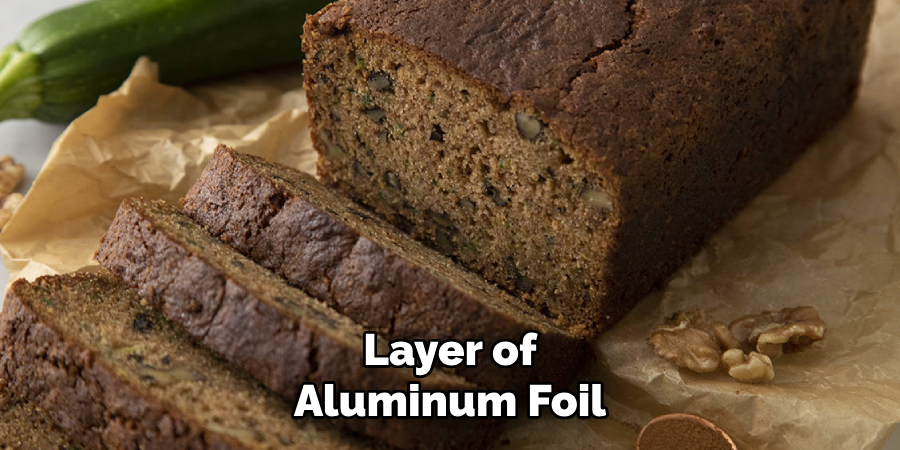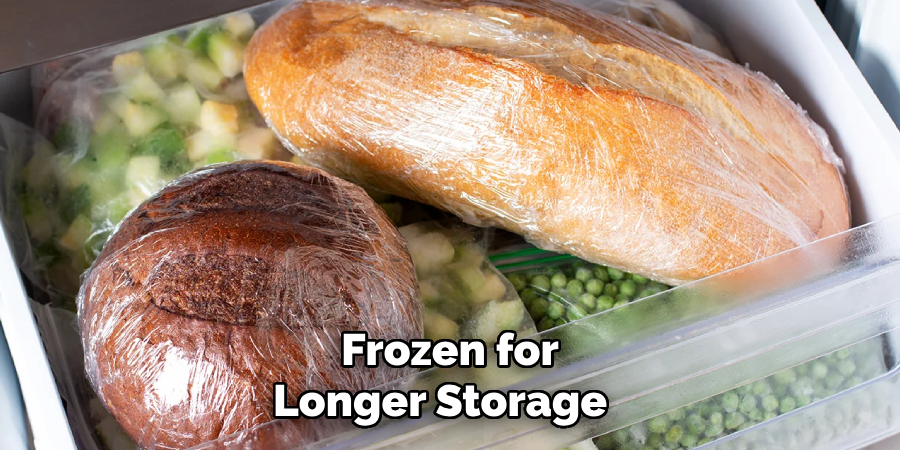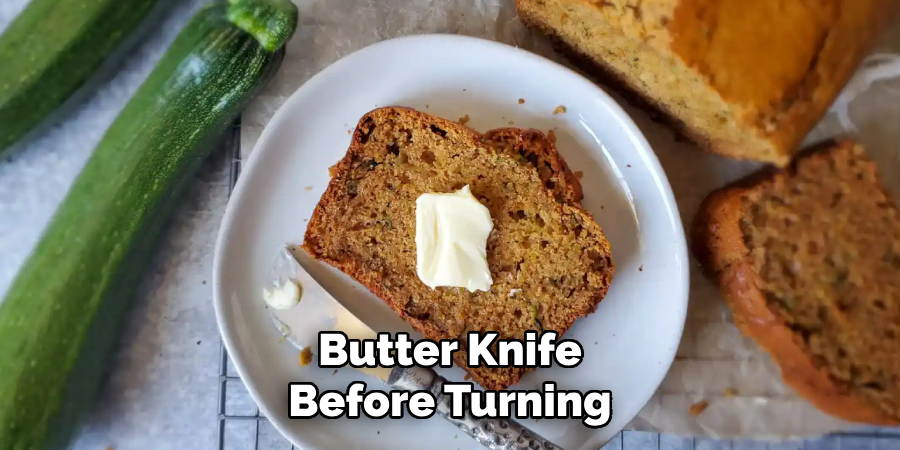Zucchini bread is a delicious and versatile treat that can be enjoyed year-round. Whether you’ve baked a fresh loaf or received one as a gift, proper storage is essential to maintain its flavor and texture. Storing zucchini bread correctly ensures that it stays moist, fresh, and ready to enjoy for as long as possible. This guide will provide you with simple tips for how to store zucchini bread at its best.

Common Issues with Improper Storage
Improperly storing zucchini bread can lead to several issues that diminish its quality. One common problem is dryness, which occurs when the bread is left exposed to air for too long, causing it to lose its moisture.
On the other hand, storing zucchini bread in a way that traps too much moisture, such as wrapping it while it’s still warm, can lead to sogginess or mold growth.
Additionally, failing to keep it in a clean, airtight container may result in the bread absorbing unwanted odors or flavors from its surroundings. Understanding these common pitfalls can help you avoid them and keep your zucchini bread fresh and delicious.
Short-Term vs Long-Term Storage
When storing zucchini bread, the duration for which you plan to keep it determines the most appropriate storage method. For short-term storage, keeping the bread at room temperature is ideal.
Simply wrap the zucchini bread tightly in plastic wrap, aluminum foil, or place it in an airtight container to protect it from air exposure. This will help maintain moisture and freshness for up to 2-3 days. Be sure to store it in a cool, dry place, away from direct sunlight or heat sources.
For long-term storage, freezing is the best option. Ensure that the bread has completely cooled before wrapping it tightly in plastic wrap, followed by a layer of aluminum foil, to prevent freezer burn.
Alternatively, seal it in a freezer-safe bag with as much air removed as possible. Properly stored, zucchini bread can retain its flavor and texture in the freezer for up to 3 months. To enjoy, simply thaw the bread at room temperature or warm it gently in an oven.

10 Methods How to Store Zucchini Bread
1. Room Temperature Storage in an Airtight Container
For short-term storage, keeping zucchini bread at room temperature is the most convenient option. Once the loaf has completely cooled, place it in an airtight container or wrap it in plastic wrap.
This prevents moisture loss while protecting it from air exposure, which can cause it to dry out. Store the container in a cool, dry area away from direct sunlight or heat sources. Zucchini bread stored this way will remain fresh for up to three days.
2. Using a Bread Box for Natural Freshness
A bread box provides a slightly ventilated environment that balances moisture retention and airflow. Placing your zucchini bread in a bread box ensures it doesn’t become overly moist while preventing it from drying out.
Unlike airtight containers, which can sometimes trap too much humidity, a bread box allows just enough air circulation to maintain an ideal texture. This method works well for up to four days.
3. Refrigerating for Extended Freshness
If you need to keep your zucchini bread fresh for a longer period, refrigeration is an effective solution. Before refrigerating, wrap the bread tightly in plastic wrap, followed by aluminum foil, or place it in a resealable bag.
This double-layer protection prevents the bread from absorbing unwanted fridge odors and moisture fluctuations. When stored properly in the refrigerator, zucchini bread can last for up to a week. Before serving, let it sit at room temperature for about 15–20 minutes to regain its softness.
4. Freezing Whole Loaves for Long-Term Storage
Freezing is the best option for those who want to keep zucchini bread for months. To freeze a whole loaf, allow it to cool completely before wrapping it tightly in plastic wrap.
Then, add a layer of aluminum foil or place it in a freezer-safe resealable bag. Label the package with the date to track freshness. Frozen zucchini bread can last for up to three months. When ready to eat, thaw it overnight in the refrigerator or at room temperature for several hours.
5. Freezing Individual Slices for Convenience
If you prefer to enjoy zucchini bread a slice at a time, freezing individual portions is a great method. Slice the cooled loaf into even pieces and arrange them on a baking sheet lined with parchment paper.
Freeze the slices for about an hour until firm. Once frozen, transfer them into a freezer-safe bag, separating layers with wax paper to prevent sticking. This way, you can grab a slice whenever needed without defrosting the entire loaf.

6. Vacuum Sealing for Maximum Freshness
Vacuum sealing is a highly effective way to store zucchini bread for an extended period while maintaining its flavor and texture. Using a vacuum sealer, remove as much air as possible before sealing the loaf or slices in a freezer-safe bag.
This method significantly reduces freezer burn and oxidation, keeping the bread fresh for up to six months. When ready to enjoy, thaw the vacuum-sealed bread in the refrigerator or at room temperature before unsealing to avoid condensation issues.
7. Using Beeswax Wrap as an Eco-Friendly Option
For those who prefer sustainable storage methods, beeswax wrap is an excellent alternative to plastic wrap. Wrap the zucchini bread tightly in beeswax wrap to create a breathable yet protective barrier.
This method works best for short-term storage, keeping the bread fresh for up to three days at room temperature. The wrap can be reused after washing, making it an environmentally friendly option for those reducing plastic waste.
8. Storing in a Paper Bag for a Crisper Crust
If you enjoy a slightly firmer crust on your zucchini bread, storing it in a paper bag is a simple yet effective method. The paper absorbs excess moisture while allowing airflow, preventing the loaf from becoming overly damp. However, this method is best for short-term storage, as the bread may dry out faster than with airtight storage. Zucchini bread kept in a paper bag will stay fresh for about two days.
9. Refrigerating Dough Instead of Baked Bread
For those who prefer fresh-baked zucchini bread on demand, storing the unbaked batter in the refrigerator is an excellent strategy. Prepare the batter as usual, then store it in an airtight container or cover the mixing bowl with plastic wrap.
Refrigerated batter remains good for up to 24 hours. When ready to bake, let the batter come to room temperature for about 15 minutes before pouring it into a loaf pan and baking as usual.
10. Pre-Slicing and Wrapping for On-the-Go Snacking
For individuals with busy schedules, pre-slicing and wrapping individual pieces of zucchini bread make for a convenient grab-and-go option. Wrap each slice tightly in plastic wrap or parchment paper and store them in an airtight container or resealable bag.
These can be kept at room temperature for up to three days, refrigerated for up to a week, or frozen for longer storage. This method ensures you always have a quick snack ready to enjoy without any hassle.

Troubleshooting Common Issues
Even with proper preparation and storage, you might occasionally encounter some challenges with your zucchini bread. Here are some common problems and how to address them:
Dry or Crumbly Texture
If your zucchini bread turns out dry, it may be due to overbaking or insufficient moisture in the batter. To fix this, ensure that you do not overmix the ingredients, as this can result in a dense texture.
Use fresh, moist zucchini and avoid squeezing out too much water from it. Additionally, check your oven temperature with a thermometer to verify that it’s accurate, and begin testing for doneness a few minutes before the recommended baking time is up.
Soggy or Undercooked Center
A soggy middle is often caused by baking at too high a temperature or removing the bread from the oven too soon. Use an oven thermometer to confirm that your oven is calibrated correctly. Always test the bread by inserting a toothpick into the center—if it comes out clean or with a few moist crumbs, the bread is ready. Additionally, ensure that your loaf pan isn’t too small, which can cause the bread to cook unevenly.
Sticking to the Pan
If your zucchini bread sticks to the pan, it’s likely due to insufficient greasing or improper cooling. Always grease and flour your loaf pan thoroughly, or better yet, line the pan with parchment paper for easy removal. Allow the bread to cool in the pan for about 10–15 minutes, then gently loosen the edges with a butter knife before turning it out onto a wire rack to cool completely.

Conclusion
Storing zucchini bread properly ensures that it retains its delightful texture and flavor for as long as possible.
Whether you prefer room temperature storage, refrigeration, or freezing, each method serves a specific purpose depending on how soon you plan to enjoy your bread. Thanks for reading, and we hope this has given you some inspiration on how to store zucchini bread!
Professional Focus
Angela Ervin, a former interior designer turned blogger, specializes in kitchen design and renovations. Through her website, she blends her passion for cooking with design expertise, sharing practical and creative ideas. Known for balancing functionality and beauty, Angela’s insightful content has made her a trusted voice in home design and lifestyle.
About the Author
Angela Ervin, an experienced interior designer and blogger, combines her passion for kitchen renovations with storytelling. Living in Petersburg with her family, she enjoys cooking and testing her projects firsthand. Known for her humor and relatable style, Angela shares creative, functional design insights through her content, making her a trusted voice in home design.
Education History
University: Virginia Commonwealth University
Degree: Bachelor of Fine Arts (BFA) in Interior Design
- Angela’s education at VCU focused on mastering core interior design principles, including spatial planning, color theory, materials selection, and sustainable design practices.
- She gained hands-on experience through studio projects and collaborative design exercises, which honed her ability to create functional and aesthetically pleasing environments.
- Her coursework also emphasized problem-solving and practical applications of design, preparing her for real-world projects like her self-directed kitchen renovations.
- The program’s strong foundation in both technical skills and creative expression shaped Angela’s ability to seamlessly integrate form and function in her work.


